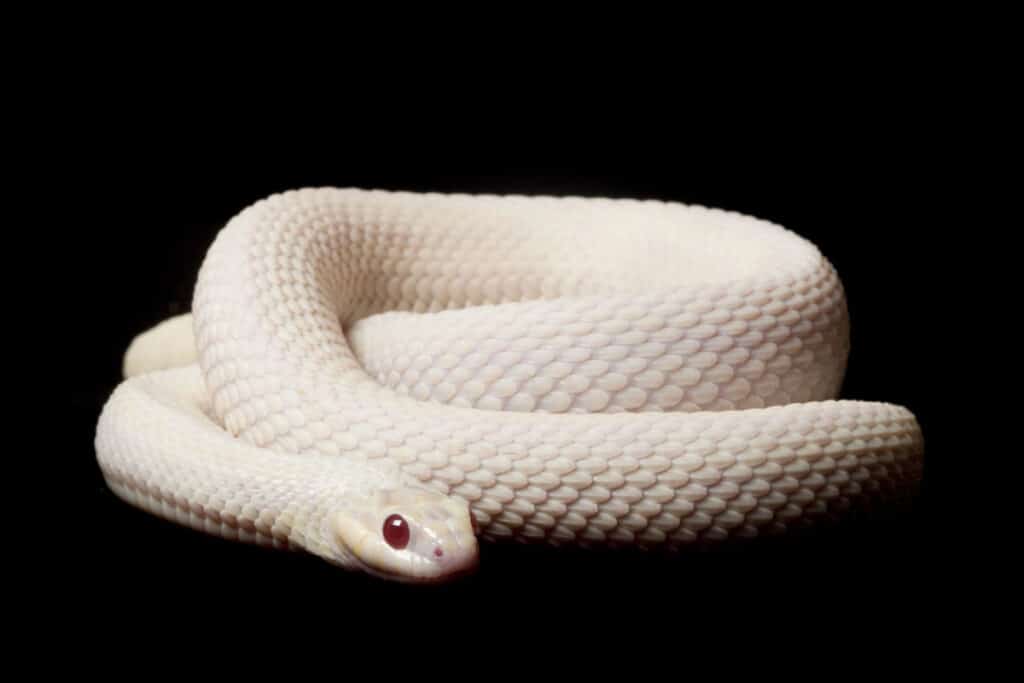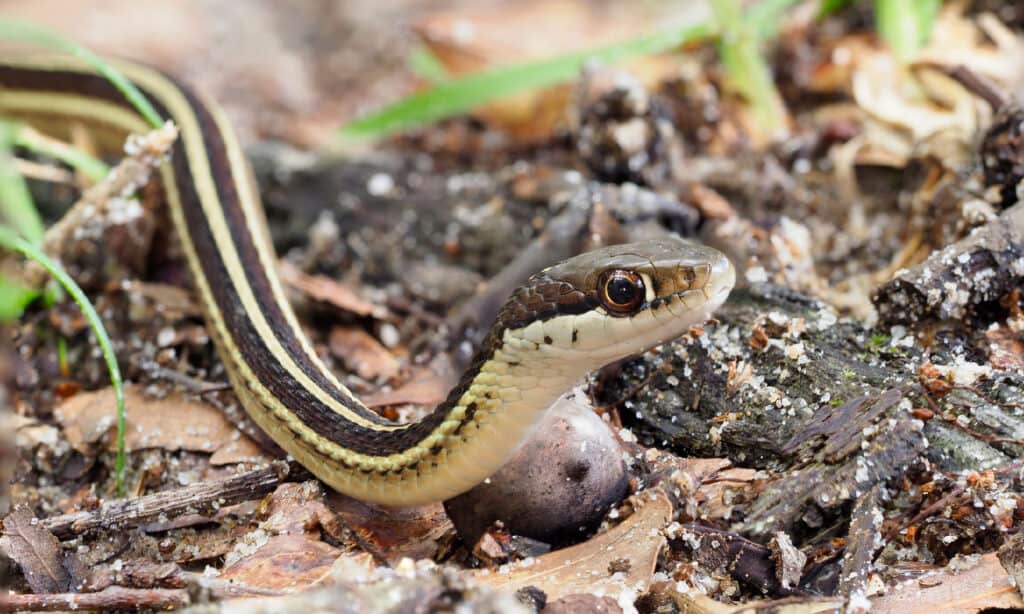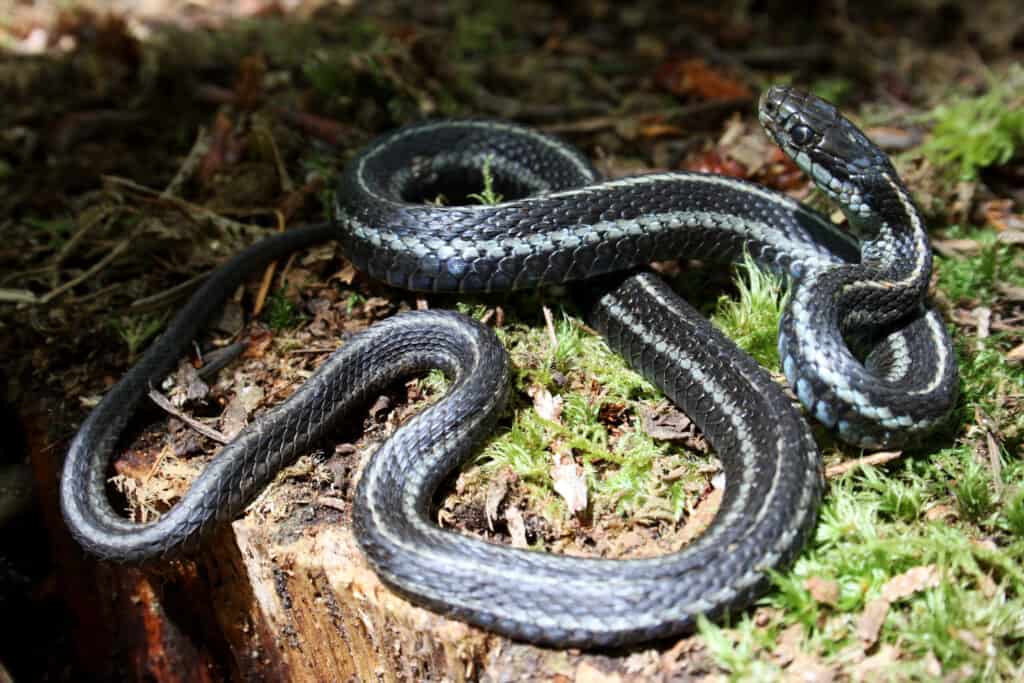Key Points
- Snakes are ectothermic and cannot produce their own body heat.
- They also undergo brumation to enable them to withstand the cold.
- While they’re none too fond of snow, certain species such as garter snakes and common European adders are more frost tolerant than others and may sneak out for a touch of warm sunshine even during winter.
Snakes and cold do not mix, but does that mean they never go out in the snow? In the winter you are not likely to see a snake, since they are ectothermic. Ectothermic animals like snakes, and all other reptiles, rely on the outside temperature to regulate their body. This is why it’s common to see animals like lizards sitting in the sun so they can get warm. Cold-blooded animals like snakes are not able to tolerate the cold temperatures of winter, as they can potentially kill them. While snakes can’t tolerate the cold, that does not ruin your chances of seeing one in the snow.
In the winter snakes become inactive and are not seen often. They enter a state called brumation, which is similar to hibernation, and hide in secluded areas. This article will cover what snakes do in the winter, and also whether snakes ever come out in the snow.
Do Snakes Go Out In The Snow?

Seeing a snake in the winter, like this snow garter snake, is unlikely since they go into a period of inactivity called brumation when temperatures drop.
©fivespots/Shutterstock.com
Seeing a snake in the snow is not likely since snakes are inactive in the winter. Warm-blooded animals like bears or skunks hibernate in the winter, while ectothermic animals like reptiles and amphibians brumate. Snakes brumate in dens, underground burrows, and caves under the frost line. These dens are called hibernaculum.
Finding a snake in the snow is not likely, but that does not mean it is impossible. Brumating snakes can wake on some days and may wander from their hibernaculum looking for food. It is possible to see a more cold-tolerant species like a garter snake in the snow looking for a warm rock to bask on, or some water.
Snakes may exit the state of brumation on a warmer day in winter but will go back to their den once the temperate starts to drop. While seeing a snake in the snow is possible in the right circumstances, they do not enjoy cold temperatures, and become inactive in the winter.
What is Brumation?

Brumation is a period of inactivity that allows snakes to survive cold temperatures.
©iStock.com/sdbower
Snakes are only able to live regularly at a temperature of around 65° Fahrenheit and can manage warmer temperatures above 90 degrees Fahrenheit. Snakes rely on the weather and other outside sources to regulate their temperature. When it gets too cold brumation helps them survive the winter without dying.
When brumating the animal does not eat, drink, or poop, and slows down its metabolism immensely. An animal’s respiratory rate, heart rate, and core body temperature all drop while brumating.
Snakes and other similar animals are able to stay in this period for several weeks, up until the temperatures begin to get warm. Spring is when most snakes start to become active again, which is why seeing a snake in the snow is extremely rare. When winter is over that is when you can see the most snakes.
What Seasons Can I See Snakes The Most?

A garter snake (Thamnophis sp.) lies coiled in the sunlight on a mossy stump.
©Colby Hess/Shutterstock.com
Spring and fall are when snakes are most active. The temperatures during this time of year are easily tolerated by snakes. Snow and winter are a snake’s enemy, and they are least likely to be seen during the coldest months. Spring is when snakes begin to become active after brumating during winter. They can often be seen basking in the sun during this period. Spring, summer, and fall are also the mating seasons for snakes, and each species has its own preference for the time it mates.
If you are looking to find snakes near you then spring to fall are the main months to look, and snakes are active both day and night. In summer snakes are more likely to be active at night, to escape the blistering heat. Food and water sources are other things that attract snakes. There are over 4,000 different snake species in the world, and they live in a variety of different areas, so look out!
Where Do Snakes Live?

Greenland is one of the few places on earth that doesn’t have any snakes.
©posteriori/Shutterstock.com
Given that snakes need a minimum temperature of around 65° to live comfortably, there are parts of the world that snakes would avoid. While some of these places have no snakes because of their ultra-cold climates, some places are islands that just don’t have any snakes on them. Below is a complete list of places on Earth with no snakes:
- Antarctica
- New Zealand
- Ireland
- Greenland
- Iceland
- Alaska
- Hawaii
- Cook Island
- Cape Verde
- Pacific Islands
The photo featured at the top of this post is © fivespots/Shutterstock.com
Discover the "Monster" Snake 5X Bigger than an Anaconda
Every day A-Z Animals sends out some of the most incredible facts in the world from our free newsletter. Want to discover the 10 most beautiful snakes in the world, a "snake island" where you're never more than 3 feet from danger, or a "monster" snake 5X larger than an anaconda? Then sign up right now and you'll start receiving our daily newsletter absolutely free.
Thank you for reading! Have some feedback for us? Contact the AZ Animals editorial team.






